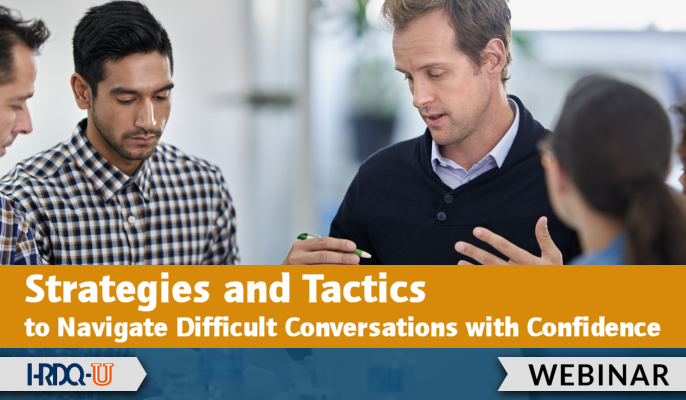- 827 Lincoln Ave. #B-10 West Chester, PA 19380
- support@hrdq.com
- +1-610-279-2002
Quick Links
Menu
Featured Topics
Menu
Total Results
We could not find what you're looking for. Please try again.No Record Found

Difficult conversations are inevitable, but the anxiety and stress that comes with them don’t have to be. The skills for any conflict or difficult conversation are usually straightforward, but the real key to confidently using them is mastering the inner game. True confidence comes from understanding our own beliefs around conflict, our response to strong emotions, and the skills to manage someone else’s emotions. Whether you avoid difficult conversations to keep the peace, freeze up when trying to negotiate with others, or feel bad when you’re responsible for giving bad news, this webinar will give you the skills to confidently communicate and assert yourself.


Chris Wong started his career as a direct care staff member for adolescents in a psychiatric inpatient hospital. He enjoyed working with the youth so much that he went to Boston University School of Medicine, where he received his Master’s in Mental Health Counseling and Behavioral Medicine. After graduating, he worked as a licensed therapist in a variety of settings, including an adolescent residential treatment center, outpatient clinics, and mobile crisis evaluations in the Boston and Cambridge area.
In 2016, he started work as a training manager at a non-profit child welfare agency, developing and facilitating trainings to support staff around clinical interventions, cultural humility, and any needed training support for programs. In 2019, he moved into a new role as Director of Employee Learning and Development, where he oversees leadership and career development for the organization. This includes training and coaching for leaders at all levels of the organization to both strengthen and build a leadership pipeline.
Chris is a certified executive coach and works with HR and L&D leaders on difficult conversations, conflict resolution, building powerful relationships, leadership development, productivity, leading change, diversity, equity, and inclusion.
Training Tools for Developing Great People Skills
This event is sponsored by HRDQ. For 45 years HRDQ has provided research-based, off-the-shelf soft-skills training resources for classroom, virtual, and online training. From assessments and workshops to experiential hands-on games, HRDQ helps organizations improve performance, increase job satisfaction, and more.
Learn more at HRDQstore.com
“This was helpful for me to identify areas to practice more when it comes to having difficult conversations. It reminds me that in order for the conversation to be productive, respectful and responsive, we need to meet all of these points.”
– Erin B.
“I get extreme anxiety when it comes to these conversations at work or in everyday life. This webinar has helped me with a few tips and pointers. Thank you.”
– Melinda D.
“I always enjoy these HRDQ webinars. It’s not too much of a time commitment and I always leave with some tips to make my job better.”
– Kendall H.

Sign up to be notified of upcoming live webinars, in-depth workshops, podcasts, blog posts, promotions and much more. Stay ahead of the curve and subscribe for FREE today!